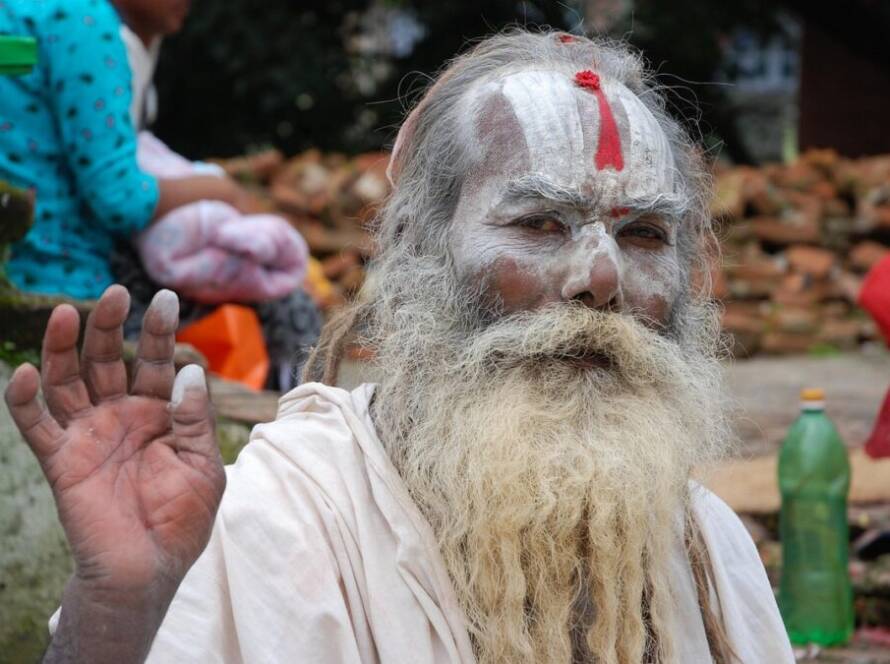“In order to know the honey, you have to taste the honey” is one of the famous tantric sayings.
In the West, Tantra is often misunderstood as spiritual eroticism. If you look on the internet, most offerings in the “tantra” field are grouped around erotic massage, sexual practices and such. This idea does not begin to embrace the full idea of traditional Tantra.
The path of Tantra
Tantra is an authentic spiritual path that leads–as any genuine spiritual practice does–to wisdom and high revelations about oneself and the universe. Tantra developed a few thousand years ago in India; the teachings and methods were passed down orally from master to disciple, so the beginning of Tantra cannot be dated accurately. Long after their philosophical conception, the wisdom of Tantra and a great number of tantric practices were captured in ancient texts, often formulated in verses or even rhymes.
The tradition of Tantra embraces a variety of different streams and lineages. In his immense life’s work, the great sage Abinavagupta brought together all different ideas and sub-streams of Tantra into one coherent philosophy. He combined the rich revelations and understandings of all great tantric mystics of that time and created one tantric vision.

Tantra sees the Divine in everything
As opposed to the tantric philosophies of the time, other yogis of India typically followed the belief of the world as illusion.
They practiced the straining of the physical body and the harsh disciplining of the mind, refused sensuality, and obeyed intense fasting periods in order to detach from the illusory world. From this, they formulated the common principle of “neti neti,” meaning “not this, not that” in Sanskrit. In other words, the great Absolute, the Divine, the final Truth is neither this nor that part of this world. Practically, this principle expressed itself in the quest to find the Divine (or God) beyond the illusion, in pure Divine consciousness.
The perspective of Tantra, on the other hand, is based on the principle of “iti iti,” which means “this and also that.” In other words, according to tantric philosophy, the Divine can be found here and also there: in all parts of this world! Tantric mystics believed that they were part of creation and aimed to find ways to use the physical body, senses and sensuality, personality, various emotions and the day to day experience in order to find their true Divine essence or the absolute Truth in everything.
Therefore, Tantra is a system of practices to find fulfillment here and now – in other words, tasting in the honey in order to understand it. Living a tantric life is a constant quest for what fulfills us, what makes us grow, what touches our soul and what expands us – a quest to remember the Divine in every moment.
Tantra applied
For the adept, the tantric quest starts with acceptance – more precisely, accepting who you are right now and where you are in your development. In order to do that, it is necessary to observe oneself honestly and openly, contemplating with detachment what we can still learn, what limits we can still let go of and how we can expand for even greater fulfillment.
How can we start with the practice of Tantra? In order to systematically observe one’s being and create step-by-step expansion and transformation, the study of the seven distinct levels of our being can be a great help. The seven levels of energy and consciousness that are available to each of us are called in Sanskrit the seven chakras. The system of chakras embraces all the different aspects of our inner universe, from our physical body and vitality, our sexuality and personality, to the mysterious aspects of the soul, and the supramental.
One holistic and clear approach to tantric practice is the gradual study of all seven levels, one by one, starting with the lowest, most approachable one, and evolving to the highest, most refined spiritual aspects of our being. The practice of harmonizing each level then leads to the gradual unfolding of the potential of each respective chakra and the uplifting of consciousness to higher and higher realms of understanding and experience.
Once all seven chakra-s are harmoniously activated, one will find completion and fulfillment by merely existing and will realize that all we want to have and all we want to be already exists inside of us. In this state, the tantric adept rests in complete inner peace and contentment while being and acting in the normal world, revealing a state of absolute liberation, even in the midst of this apparent illusion of existence.
People who liked this article may also be interested in our Tantra Course.


